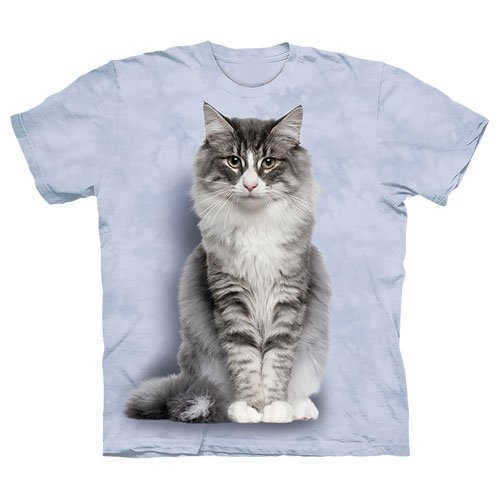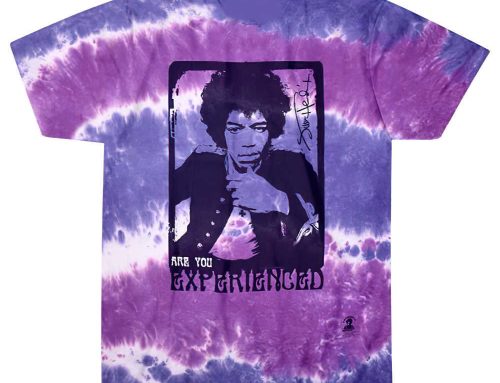How to Tell if a Cat is Sick: Top Signs Every Cat Owner Should Know
As beloved members of our families, cats often mask their illnesses, making it crucial for cat owners to recognize the subtle signs of a sick cat. Understanding how to tell if a cat is sick can enable timely interventions that may save your feline friend’s life. From changes in behavior and appetite to physical symptoms like vomiting or lethargy, knowing what to look for can make all the difference. In this guide, we will explore the top signs every cat owner should be aware of to ensure their cats remain happy and healthy.
Recognizing Common Symptoms
Changes in Appetite
One of the first signs that your cat might be sick is a noticeable change in appetite. Cats are creatures of habit, so any sudden increase or decrease in their food intake should raise a red flag. If your cat is eating significantly less, it could be a sign of various issues such as dental problems, gastrointestinal disturbances, or even more serious conditions like kidney disease. On the other hand, a sudden increase in appetite could indicate conditions like hyperthyroidism or diabetes. Pay close attention to how much and how often your cat eats and consult your veterinarian if you notice any drastic changes. Early detection of these signs can lead to more effective treatment and a better outcome for your feline friend.
Unusual Lethargy
Lethargy in cats can be another important indicator of illness. While cats do enjoy their naps, a sick cat will exhibit lethargy that goes beyond typical feline laziness. If your usually active cat suddenly becomes inactive, uninterested in play, or spends more time sleeping than usual, it could be a sign of underlying health issues. Conditions such as infections, anemia, or heart disease can cause your cat to feel unusually tired or weak. Observe your cat’s energy levels and responsiveness to stimuli. If you notice a prolonged period of lethargy, it is crucial to consult your veterinarian for a thorough examination. Timely intervention can help diagnose the problem early, ensuring your cat receives the care needed to recover and return to their normal, playful self.
Respiratory Distress
Respiratory distress is a serious symptom that should never be ignored in cats. Symptoms such as rapid breathing, coughing, wheezing, or nasal discharge can indicate respiratory problems ranging from infections like upper respiratory infections (URIs) to more serious conditions like asthma or heart disease. Watch your cat for signs of labored breathing, open-mouth breathing, or noisy respiration. These symptoms can be distressing for both you and your cat and require immediate veterinary attention. Prompt diagnosis and treatment are crucial, as respiratory issues can quickly become life-threatening if left untreated. Always monitor your cat’s breathing patterns and consult your veterinarian if you observe any unusual respiratory behaviors. Early intervention can make a significant difference in your cat’s health and well-being.
Behavioral Changes
Hiding or Isolation
Cats are known for their independent nature, but excessive hiding or isolation can be a sign that your cat is sick. When cats are unwell, they often retreat to secluded or quiet areas to avoid interaction. This behavior is a natural instinct to protect themselves from potential threats when they are vulnerable. If your usually social cat starts avoiding people, other pets, or their favorite spots, it is time to pay attention. This change in behavior can indicate discomfort or pain, which may be due to various health issues such as infections, injuries, or even stress. Monitor your cat’s behavior closely and take note of any prolonged periods of isolation. Consult your veterinarian to rule out any medical conditions and ensure your cat receives the appropriate care and attention needed to help them return to their normal behavior.
Aggression or Irritability
Aggression or irritability in cats can be a clear signal that something is wrong. A normally gentle and affectionate cat that suddenly becomes aggressive or irritable may be experiencing pain or discomfort. This change in behavior can be associated with various health issues, including dental problems, arthritis, or internal illnesses. Cats in pain may lash out when touched or approached, as a way to protect themselves. Additionally, stress and anxiety can also lead to increased irritability. If your cat’s temperament changes abruptly, it is essential to observe their behavior and physical condition closely. Consult your veterinarian to identify any underlying health problems that might be causing this aggression. Addressing the root cause can help alleviate your cat’s discomfort and restore their usual demeanor.
Excessive Grooming
While grooming is a natural and healthy behavior for cats, excessive grooming can indicate an underlying problem. Cats may groom excessively due to skin issues such as allergies, infections, or parasites like fleas. Additionally, stress and anxiety can also lead to over-grooming, where a cat compulsively cleans themselves to the point of hair loss or skin irritation. It’s essential to monitor your cat for signs of excessive grooming, such as bald patches, redness, or sores. If you notice these symptoms, consult with your veterinarian to identify the cause and receive appropriate treatment. Managing the underlying issue, whether it is medical or behavioral, can help reduce excessive grooming and improve your cat’s overall well-being. Early intervention is key to preventing further complications and ensuring your cat remains comfortable and healthy.
Physical Indicators
Vomiting and Diarrhea
Vomiting and diarrhea are common signs that a cat may be sick. While occasional vomiting or a mild bout of diarrhea might not be alarming, frequent or severe episodes can indicate a more serious issue. Causes of vomiting and diarrhea in cats can range from dietary indiscretions and food allergies to infections, parasites, or chronic diseases such as inflammatory bowel disease. Persistent symptoms can lead to dehydration and nutrient deficiencies, making it crucial to seek veterinary care promptly. Monitor your cat for additional symptoms such as lethargy, loss of appetite, or weight loss, and be sure to report these to your veterinarian. Timely diagnosis and treatment can help address the root cause of these digestive disturbances and restore your cat’s health. Early intervention is essential to prevent more severe complications and ensure your cat’s well-being.
Weight Loss or Gain
Unexplained weight loss or gain in cats can be a significant indicator of an underlying health issue. Sudden weight loss might signal problems such as hyperthyroidism, diabetes, or gastrointestinal disorders. On the other hand, rapid weight gain, especially in the form of fat, can indicate conditions like hypothyroidism or other metabolic disorders. It is crucial to monitor your cat’s weight regularly and take note of any drastic changes. Weight fluctuations can also result from changes in diet or activity levels, but persistent issues should not be ignored. If you observe significant weight loss or gain, consult your veterinarian for a thorough examination and possible diagnostic tests. Early detection and management of the underlying cause can help maintain your cat’s health and prevent further complications. Ensuring a balanced diet and regular exercise can also contribute to your cat’s overall well-being.
Unkempt Coat and Appearance
A cat’s coat is often a reflection of its overall health. An unkempt coat and a disheveled appearance can be signs that your cat is sick. Cats are typically meticulous groomers, so a lack of grooming can indicate issues such as arthritis, dental problems, or other illnesses that make self-care difficult. Additionally, skin conditions, parasites, or nutritional deficiencies can also lead to a poor coat condition. Look for signs like matted fur, dandruff, or an oily or greasy coat. These symptoms warrant a closer look and possibly a visit to the veterinarian. Ensuring your cat receives regular grooming and a balanced diet can help maintain their coat’s health. However, if you notice persistent issues, it’s essential to seek professional advice to diagnose and treat the underlying cause, thereby improving your cat’s overall well-being and appearance.
Enjoy some interesting animal facts below!

How Did Jimi Hendrix Die?
How Did Jimi Hendrix Die? Jimi Hendrix, a name synonymous with groundbreaking guitar riffs and electrifying performances, left an indelible mark on the world of rock music. As fans and historians delve into the details surrounding his untimely departure, the question “How did Jimi Hendrix die?” often arises. His death at the young age of […]

How Jimi Hendrix Became One of the Greatest Guitarists in Rock Music History
How Jimi Hendrix Became One of the Greatest Guitarists in Rock Music History Jimi Hendrix, a name that resonates with guitar enthusiasts and rock music history buffs alike, stands tall among the greatest guitarists of all time. His innovative guitar techniques and profound musical influence continue to captivate aspiring guitarists and seasoned fans. Hendrix’s ability […]

Did Jimi Hendrix Write His Own Songs? Unveiling the Truth Behind His Iconic Hits
Did Jimi Hendrix Write His Own Songs? Unveiling the Truth Behind His Iconic Hits Jimi Hendrix, a name synonymous with groundbreaking guitar riffs and electrifying performances, remains an enigmatic figure in music history. But did Jimi Hendrix write his own songs? The answer is as vibrant and multifaceted as his legacy itself. As we delve […]

Jimi Hendrix at Woodstock: A Journey Through the 1969 Music Festival’s Most Memorable Moments
Jimi Hendrix at Woodstock: A Journey Through the 1969 Music Festival’s Most Memorable Moments The 1969 music festival known as Woodstock was more than just a gathering of peace and music; it was a defining moment in music history that still resonates today. Among the standout performances was Jimi Hendrix at Woodstock, where he delivered […]

Jimi Hendrix Guitar: A Profile of the Man and His Famous Instruments
Jimi Hendrix Guitar: A Profile of the Man and His Famous Instruments Jimi Hendrix, a name that resonates with the soul of rock and roll, was not just a guitarist but a revolutionary force in electric guitar history. Known for his electrifying performances and innovative guitar playing style, Hendrix brought the iconic Stratocaster to life, […]

Exploring Jimi Hendrix’s Influences: How Guitar Legends Shaped His Iconic Sound
Exploring Jimi Hendrix’s Influences: How Guitar Legends Shaped His Iconic Sound Jimi Hendrix’s revolutionary sound continues to captivate music enthusiasts, guitar players, and students of music history alike. His iconic style, often regarded as a pinnacle of 60s music, was shaped by a tapestry of musical influences that included legendary guitarists who paved the way […]
Follow us on Social Media
Instagram – YouTube – Pinterest – Twitter – Facebook
Alligators – Aquatic – Bears – Big Cats – Birds – Buffalo – Cats – Deer – Dinosaurs – Dogs – Dragons – Eagles – Elephants – Elk – Frogs – Gecko – Giraffes – Horses – Kittens – Moose – Pandas – Snakes – Tigers – Unicorns – Wolves – Cat Shirts – Celtic – Dog Shirts – Dolphins – Dragons – Eagles – Fairies – Horse Shirts – Misc – Native American Indians – Patriotic – Peace – Primates – Religion – Scary – Sci Fi – Skeletons – Tie Dye – Tigers – Wolf Shirts
Interesting Animal Facts and Information
Bald Eagles – Cheetahs – Dolphins – Dinosaurs – Tigers – Lions – Cats – Dogs












Leave A Comment
You must be logged in to post a comment.